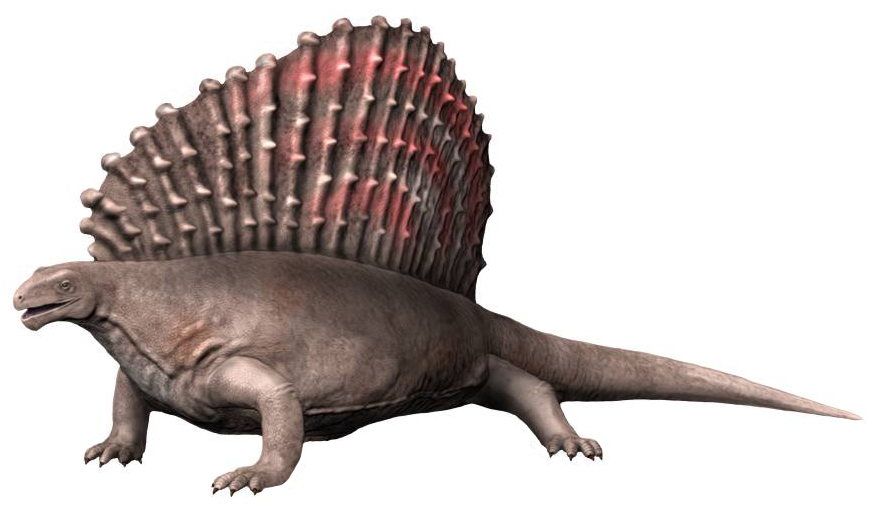Edaphosaurus: The Sail-Backed Herbivore of the Permian
Introduction
Edaphosaurus was a prehistoric synapsid that lived during the Late Carboniferous to Early Permian periods, around 300 to 280 million years ago. Known for the large sail on its back, similar to its distant relative Dimetrodon, Edaphosaurus was one of the earliest large herbivores to appear on Earth. Unlike Dimetrodon, which was a carnivore, Edaphosaurus was primarily a plant-eater and played a significant role in shaping the early ecosystems of the Permian period. shed new light on the diversity of armored dinosaurs in the Southern Hemisphere.
Physical Characteristics
Edaphosaurus was a large, heavy-bodied animal that could grow up to 3 meters (10 feet) long and weigh around 300 kilograms (660 pounds). Its most recognizable feature was the tall sail that extended along its back, supported by elongated neural spines. This sail is thought to have served multiple functions, such as thermoregulation, species recognition, or possibly mating displays.
The body of Edaphosaurus was bulky, with short, sturdy limbs that were well-adapted to supporting its heavy frame. Its head was relatively small compared to its body, with blunt teeth suited for grinding plant material. The skull of Edaphosaurus featured a unique set of teeth on the palate, which likely helped it process tough vegetation.

Skeletal cast mounts of Yangchuanosaurus and Tuojiangosaurus on display at the Beijing Museum of Natural History. Photo by Jonathan Chen
Natural History and Discovery
Fossils of Edaphosaurus have been found in North America and parts of Europe, giving paleontologists valuable insights into the early Permian ecosystems. The first fossils were discovered in the late 19th century, and since then, several species of Edaphosaurus have been identified. These discoveries helped establish the idea that not all sail-backed animals were carnivorous like Dimetrodon, providing evidence of diverse adaptations among early synapsids.
Edaphosaurus is part of the Edaphosauridae family, a group of herbivorous synapsids that were among the first vertebrates to evolve a significant size and specialize in eating plants. This group played a key role in the transition from Carboniferous ecosystems, dominated by amphibians and early reptiles, to the more complex ecosystems of the Permian.

Skeletal cast mounts of Yangchuanosaurus and Tuojiangosaurus on display at the Beijing Museum of Natural History. Photo by Jonathan Chen

by Waqas Bhatti
Biosphere and Habitat
During the Permian period, Edaphosaurus lived in a world that was much warmer and drier than the Carboniferous. The continents were still grouped together into the supercontinent Pangaea, and the climate varied from arid deserts to lush floodplains. Edaphosaurus is believed to have inhabited forested areas and open floodplains, where it could find a wide range of plants to eat.
The sail on its back may have helped Edaphosaurus regulate its body temperature, allowing it to warm up quickly in the cooler mornings and possibly shed excess heat during the hotter parts of the day. This would have been a crucial adaptation in the fluctuating climates of the early Permian.

by Dmitri Bogdanov
Diet and Feeding Behavior
Edaphosaurus was one of the first large herbivores, feeding primarily on tough, fibrous plants. Its blunt, peg-like teeth were specialized for grinding down tough plant material, while its jaw structure and palatal teeth allowed it to efficiently process a variety of vegetation. It likely fed on ferns, horsetails, and early gymnosperms, which were the dominant plants of its time.
The presence of Edaphosaurus marked an important shift in the Permian ecosystems, as large herbivores became more prevalent. Its diet would have helped maintain plant growth and contributed to the spread of early forest ecosystems.

by Dmitri Bogdanov
Edaphosaurus lived alongside a variety of other Permian creatures, including:
- Dimetrodon: A distant relative of Edaphosaurus, Dimetrodon was a large carnivorous synapsid with a similar sail-backed appearance. Dimetrodon likely preyed on smaller animals, but there may have been interactions between these two sail-backed synapsids.
- Caseids: These were another group of herbivorous synapsids that shared the Permian landscape with Edaphosaurus. While similar in lifestyle, they were typically larger and slower-moving.
- Early Amphibians: Edaphosaurus shared its world with a variety of early amphibians that had survived from the Carboniferous. These creatures likely lived in wetter environments and would have been less common in the drier habitats favored by Edaphosaurus.
- Therapsids: As the Permian period progressed, therapsids, the ancestors of mammals, began to emerge. These creatures included both herbivores and carnivores, and some species may have preyed on smaller Edaphosaurus individuals or competed with them for food.

by J. Conway
Conclusion
Edaphosaurus represents a key stage in the evolution of large herbivores and synapsids during the Permian period. Its distinctive sail and adaptations for plant-eating set it apart from its more famous relatives like Dimetrodon, highlighting the diversity of life during this ancient time. As one of the earliest large herbivores, Edaphosaurus helped shape the ecosystems of the Permian and provided a foundation for the rise of more advanced synapsids and, eventually, mammals.
Featured image credit:
Edaphosaurus life construction by Nobu Tamura.
Editor’s Note:
I use Open AI’s Chat GPT to write Species Profiles. Read more about this and get a copy of the prompt I’ve created here.
editor's pick
latest video
news via inbox
Nulla turp dis cursus. Integer liberos euismod pretium faucibua




